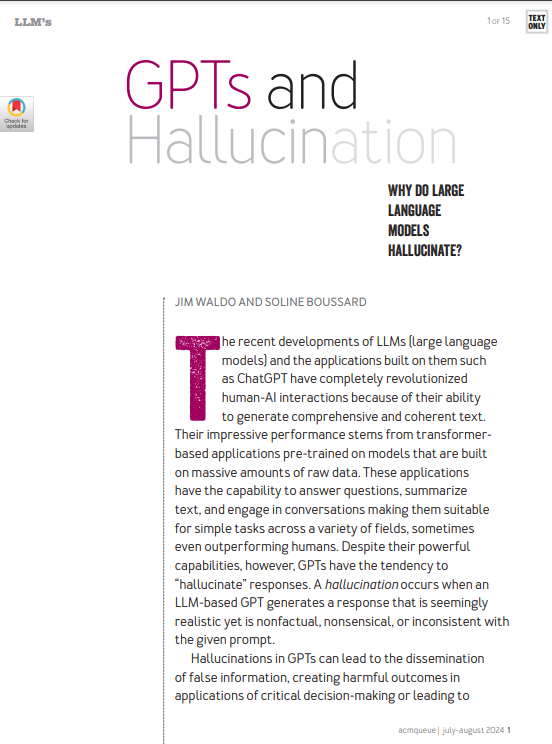The rapid development of large language models (LLM) has brought unprecedented convenience, but it also faces the major challenge of "illusion". The so-called "illusion" refers to the LLM generating content that seems real but is actually false or inconsistent with the facts. This article will conduct in-depth discussions on the latest research results of Harvard researchers on the LLM "illusion" phenomenon, analyze its causes and look forward to future development directions. Research reveals that the root of LLM's "illusion" lies in its prediction mechanism based on statistical probability, rather than a real semantic understanding. This makes LLM prone to misinformation when dealing with vague or controversial topics.
The emergence of large language models (LLM), especially the popularization of applications such as ChatGPT, has completely changed the way human-computer interactions. These models are impressive to generate coherent and comprehensive text. However, despite its powerful abilities, LLM is prone to "illusion", that is, to generate content that seems real but is actually fictional, meaningless, or inconsistent with the prompt.

Researchers at Harvard University conducted in-depth research on the LLM "illusion" phenomenon and found that its root cause lies in how LLM works. LLM constructs a probability model by machine learning on massive text data and predicts the next word based on the probability of word co-occurrence. In other words, LLM does not really understand the meaning of language, but makes predictions based on statistical probability.
Researchers compared LLM to "crowdsourcing" and believed that LLM is actually outputting "network consensus". Just like platforms like Wikipedia or Reddit, LLM extracts information from large amounts of text data and generates the most common answers. Since most languages are used to describe the world, the answers generated by LLM are usually accurate.
However, "illusion" occurs when LLM encounters a vague, controversial or lack of consensus topic. To test this hypothesis, the researchers designed a series of experiments that tested the performance of different LLMs when dealing with different topics. Experimental results show that LLM performs well when dealing with common topics, but significantly decreases in accuracy when dealing with vague or controversial topics.
This study shows that LLM, while powerful as a tool, is its accuracy dependent on the quality and quantity of training data. When using LLM, especially when dealing with fuzzy or controversial topics, its output needs to be taken with caution. This study also provides direction for the future development of LLM, namely, the need to improve the ability of LLM to deal with fuzzy and controversial topics and improve the interpretability of its output results.
Paper address: https://dl.acm.org/doi/pdf/10.1145/3688007
Harvard University's research provides valuable insights for understanding and improving LLM, and also reminds us to use LLM with caution, especially when targeting vague or controversial topics, and we need to carefully identify the accuracy of its output results, and hope that LLM will overcome it in the future. The "illusion" problem has become a more reliable and trustworthy tool.